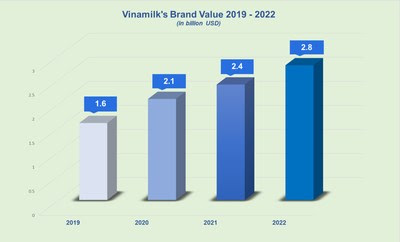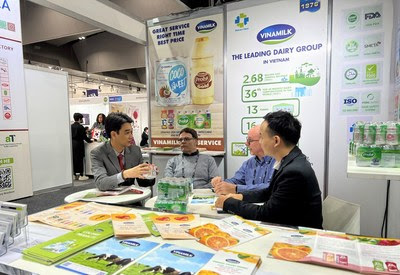SWANZEY, New Hampshire, 04 oct. 2022 (GLOBE NEWSWIRE) — Moore Nanotechnology Systems (« Nanotech »), un fournisseur mondial de premier plan de systèmes d’usinage ultra-précis, annonce l’inauguration de son centre mondial de formation et de développement de processus à Charlotte, en Caroline du Nord.
Mark Boomgarden, président-directeur général de Nanotech, a déclaré : « Nanotech est très heureuse d’annoncer l’inauguration de son centre mondial de formation et de développement de processus à Charlotte, en Caroline du Nord. Bien que l’objectif initial de cette installation soit de fournir une formation spécifique aux clients et un développement de processus à la pointe de l’industrie, elle procure également à Nanotech une capacité de production supplémentaire pour répondre aux demandes d’un marché en rapide expansion. »
Nanotech a récemment acheté et achevé l’aménagement d’un bâtiment de plus de 4 500 m2 situé dans le Northpark Corporate Park, à Charlotte, en Caroline du Nord.
La technologie fondamentale et la base d’employés de Nanotech se trouvent à Swanzey, dans le New Hampshire, et cette base est fondamentale pour les produits et services qu’ils fournissent. Mais à mesure que l’organisation continue de croître, Nanotech a besoin d’un écosystème pour stimuler et accélérer cette croissance, et la région de Charlotte lui permet d’accéder à une université de classe mondiale, à un aéroport international et à une ville dotée de l’infrastructure nécessaire pour soutenir une empreinte mondiale.
Robert Keynton, doyen de l’ingénierie à l’université de Caroline du Nord à Charlotte, a commenté : « L’un des avantages de voir Nanotech étendre ses installations ici à Charlotte est que cela renforce nos collaborations et nos relations, afin d’inclure le recrutement de nos étudiants. » M. Keynton a ajouté : « Mais cela lui permet également d’accéder aux recherches de pointe que notre corps professoral effectue et d’intégrer ces connaissances dans ses systèmes. »
Nanotech continue d’enregistrer une croissance significative alors que les exigences des systèmes optiques se complexifient et évoluent des applications réelles aux applications virtuelles. Les connaissances et le développement des processus nécessaires pour soutenir la fabrication de ces systèmes ont également considérablement augmenté.
Scott Gerhart, vice-président des ventes et du service chez Nanotech, a commenté : « La formation et l’assistance aux applications sont essentielles à nos offres de produits et de services, et sur les marchés actuels, sont attendus par nos clients. » M. Gerhart a poursuivi : « Pour cette raison, notre entreprise dépend de l’embauche des meilleurs talents disponibles dans le secteur de l’usinage ultra-précis. Les étudiants qui ont complété les programmes de formation à la fabrication de précision et la métrologie de l’université de Caroline du Nord à Charlotte sont extrêmement bien préparés pour le type de rôles dont nous avons besoin pour réussir chez Nanotech. »
Paul Vermette, vice-président de l’ingénierie, a déclaré : « Alors que nos clients continuent de faire progresser leurs capacités internes pour répondre aux exigences de l’industrie en matière de produits, Nanotech continue de garder 1 à 2 générations d’avance. » M. Vermette a ajouté : « Notre feuille de route sur 5 ans en matière de produits et technologies est construite avec la contribution des clients qui, lorsqu’elle est combinée à nos investissements internes, fournit à Nanotech l’orientation stratégique requise pour atteindre ces objectifs. »
Cette nouvelle installation de Nanotech est située au 6510 Northpark Blvd, à Charlotte, à quinze minutes du centre-ville et de l’aéroport international de Charlotte/Douglas. L’installation a été rénovée en 2022, pour inclure la construction de salles blanches de classe 10 000, dotées de plaques d’isolation en béton de 60 centimètres et avec un contrôle de la température allant jusqu’à +/- 0,1 °C. En outre, l’installation a été modernisée pour inclure un espace de fabrication de grande hauteur à température contrôlée, ainsi qu’un complexe de formation de pointe pour soutenir l’engagement des clients.
Moore Nanotechnology Systems (Nanotech) a été fondée à Keene, dans le New Hampshire, en 1997, en tant que filiale autonome de Moore Tool Company. En 2010, la société a déménagé dans une installation moderne et spécialement construite à Swanzey, dans le New Hampshire, et a ouvert une installation à Concord, en Caroline du Nord, en 2020. Depuis plus de 25 ans, Nanotech est un leader mondial en conception, développement et fabrication de machines-outils ultra-précises à la pointe de la technologie et en processus associés (fraisage au diamant mono-point, micro-usinage, micro-rectification et moulage par pression de verre) pour la production de composants optiques avancés dans les secteurs de l’électronique de grande consommation, de la défense, de l’aérospatial, de l’éclairage, de la santé et de l’automobile. Moore Tool, fondée en 1924 et située à Bridgeport, dans le Connecticut, est présente depuis longtemps sur les marchés des machines-outils de précision et de très haute précision. Aujourd’hui, Moore Tool fournit une gamme complète de rectifieuses CNC haute performance, ainsi que des services de fabrication de précision en sous-traitance certifiés selon les normes ISO 9001:2015 et AS9100C. Moore Nanotechnology Systems et Moore Tool sont des entreprises à intégration verticale de PMT Group.
Moore Nanotechnology Systems : www.nanotechsys.com
Moore Tool, Inc : www.mooretool.com
Pour tout complément d’information, veuillez contacter : sales@nanotechsys.com



